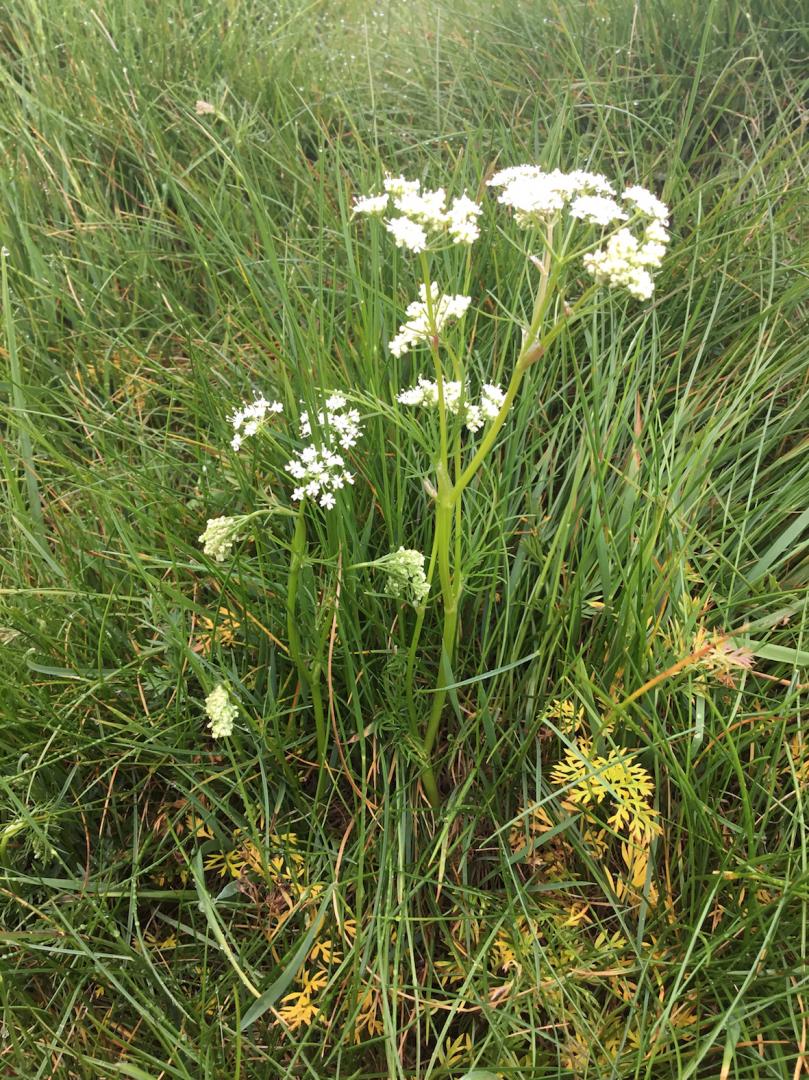Pignuts (Conopodium majus)
“HERE we go gathering nuts in May,” says the nursery rhyme; but what kind of nuts are ripe in May? The answer is the pignut, or earthnut, or earth chestnut, a plant that looks like a miniature cow parsley.
It is perennial, with fine, dill-like leaves, bearing an “umbrella” of white flowers from May onwards. The small flowers eventually produce pairs of seeds which are fragrant, and reminiscent of the smell of its relative, fennel.
The pignut belongs to the family Umbelliferae, meaning umbrella or parasol, and is related to many of our plants with edible roots, like carrot, parsnip, celeriac and chervil. And sure enough, at the base of the plant’s stem there is a small tuber: the pignut.
A quote from the 1600s reads: “The roots are very deep and fatten hogs.”
And in Shakespeare’s The Tempest, Caliban is quoted as saying: “I with my long nayles will digge thee pignuts.”
So it is clear that these small tubers were, in earlier times, food for pigs and humans.
Hazelnut-sized, pignuts have a brown skin which, peeled, reveals a white crisp nut that by curious coincidence also taste like hazelnuts.
Richard Mabey, in Flora Britannica, quotes someone recalling his uncle, between the wars, lamenting the decline of the pignut, saying that 40 years earlier you could dig up enough to feed a family of four in half an hour.
The pignuts would then be stewed in a Dutch oven with joints of rabbit.
The plants are in decline now largely because their established meadow habitats are disappearing.
But we are fortunate in Barnard Castle still to have established meadows, in particular the upper Demesnes, where pignuts flower in May and June.
It is now illegal to dig for them but they can still be admired.
The pignut also harbours a secret cohabitant. Regularly in the first week of June, small black Chimney-sweep moths with white tips to their black wings flit around the white flowers and lay eggs on the plants. These develop slowly over winter to hatch once more in June. This partnership illustrates the fragility of natural systems, for if you lose the established meadow and the pignut, you will also eliminate the moth.
Culpeper the herbalist wrote in the 1640s that both pignut seed and root were “good for provoking urine” .
We realise how much the natural world around us has changed when he claims of the plant that “a description is needless, for every child knows them” .
Dr Richard Warren is a botanist from Barnard Castle
ADVERTISEMENT
Flora and fauna: No more digging for once plentiful pignuts
ADVERTISEMENT
ADVERTISEMENT
ADVERTISEMENT







